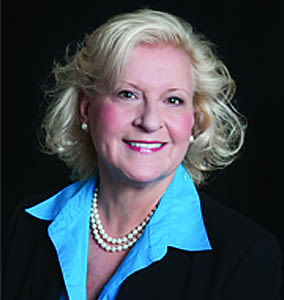DAI Solutions' Sherilyne Dougherty on Creating Your A-Team

Sherilyne Dougherty is CEO of DAI Solutions, a management consulting firm based in the Washington, D.C., area. Dougherty, a resident of Longboat Key for more than four years, is expanding the firm’s B2B offerings to Florida.
Q:
How can I make sure that I’m hiring a team player?
A:
It’s always been important to find team players, but the baby boomers are retiring and younger generations are moving up with a different perspective on the way to do business. The 9-to-5, get-the-gold-watch world is gone. With people working more flexible schedules and often away from the office, it is more important than ever to make sure that the team fits together to create a great product for the client.
Trying to find the right person—the team player—is all based around the culture of an organization. The first step is figuring out what that culture is. What is unique about the way you operate, about your culture?
For us, a candidate who is a jack of all trades adapts well. Especially in the work that we do, you might be a training person, a communications person and a project manager all on one project because that’s what the client needs. That’s our culture.
We also look for critical thinkers. The abilities to think through a problem and adapt to a situation aren’t just skills; they’re an important part of being a team member. When we work with a client and his or her needs suddenly change, we need people on the team who can quickly adapt and creatively find a different solution.
To begin the hiring process, we select a candidate based on a résumé and then bring them in for an interview. That’s where the real hiring work starts.
A résumé may give the first blush that a person has the technical skills that you are looking for, but you always have to bring them in for face-to-face interviews.
That’s when we implement our behavioral interviewing process. You are looking for people who have the technical skills and the right education, but they need to understand they may be required to do other things. A conversation framed around behavioral questions will give you the answer in a more complete way.
Don’t just say, “Tell me why you are a good candidate.”
Instead, ask a strategic question like: “If you were put in this position and a specific scenario happened, how would you handle it? What would be your first step?”
Here’s another question: “You’ve got a client who has these specific needs and must have the work done in 24 hours. This is going to be difficult. How are you going to get your team together to meet the deadline, or how are you going to tell the client that the deadline isn’t realistic?” Those questions should be created specifically for the job responsibility this person is coming into.
If a person makes the first cut by presenting a résumé with the necessary skills, then we set up the interview with the HR manager and possibly two other staff members. If the candidate makes it through this interview we may set up a second interview with a different group of staff. Every person is very different, and every team member may need something different from the candidate. If you are hiring for an upper-level position, that person has to work with everyone from the admin assistant to the senior-level boss. So bring in two, three, four other people from various levels into subsequent interviews.
Work with each employee [interviewer] to craft specific questions that will show how the candidate would interact with that employee in a situation. This may take a couple of hours, but it’s time well invested.
